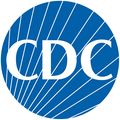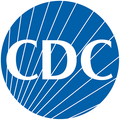Overview
- Cholera is caused by infection with a bacteria, Vibrio cholerae, that produces a toxin. The cholera bacterium is usually found in water or food sources that have been contaminated by feces (poop) from a person infected with cholera. Cholera is most likely to be found and spread in places with inadequate water treatment, poor sanitation, and inadequate hygiene.
- The most common symptom of cholera is a large amount of watery diarrhea, often described as “rice-water stool” because it can have a pale, milky appearance. People may also have nausea and vomiting. Cholera is treatable, but can be severe and rapidly fatal without treatment (replacement of water lost by diarrhea).
- Cholera occurs primarily in Africa and South and Southeast Asia. Globally, between 1.3 and 4 million people get cholera and 21,000 to 143,000 people die with cholera each year.
- Cholera is rare in the United States. Most U.S. cases occur among travelers to countries where cholera is present.
- Avoiding unsafe food and water can also prevent many cholera infections. Travelers who consistently observe safe food, water, sanitation, and handwashing recommendations while in countries affected by cholera have almost no risk of acquiring cholera.
- International Travel: Vaccination may be helpful for certain children or adults age 2 years through 64 years traveling to areas of active cholera transmission where there is poor sanitation and infrastructure and the traveler may not have consistent access to safe food and water. A travel health specialist can help decide if this vaccine is recommended.
Cholera Vaccine Schedule
A single dose of oral cholera vaccine is recommended for adult travelers age 2 years through 64 years from the United States going to an area of active cholera transmission. The vaccine reduces the chance of severe diarrhea in people by 90% at 10 days after vaccination and by 80% at 3 months after vaccination. The safety and effectiveness of the oral cholera vaccine in pregnant or breastfeeding women is not yet known, and it is also not known how long protection lasts beyond 3–6 months after getting the vaccine. There is no recommendation for a booster dose at this time. Side effects from the vaccine are uncommon and may include tiredness, headache, abdominal pain, nausea and vomiting, lack of appetite, and diarrhea.
For more information visit CDC’s Cholera vaccine page.
Partner Resources
General

Find fact sheets, resources, multimedia, and more for parents and children from CDC.

Questions and answers about cholera and vaccines from the Vaccine Education Center at the Children’s Hospital of Philadelphia.
Travel

Access the cholera chapter of the CDC Yellow Book for travel-associated infections and diseases. This resource is intended for healthcare professionals, but its information is also useful for travelers.

Find health and vaccine information by selecting any country.

Search for public health and private clinics that administer travel vaccines. This list may not include all locations that provide travel vaccines.

Facilities that administer yellow fever vaccine are authorized to issue an International Certificate of Vaccination (the “yellow card”) to meet requirements for proof of yellow fever vaccination. These facilities typically offer a wide range of vaccines travelers may need.

This directory of members of the International Society of Travel Medicine includes clinics that offer travel health services outside the United States. Users can search and filter lists by location and by services offered.
People of any age can feel a bit anxious about getting a shot. Some may be so anxious that they avoid vaccination…even when they know it’s important. Learn more about simple ways to help any child or adult feel better and more confident when getting vaccinated.
State and local information for vaccination resources near you.
CDC Travelers’ Health: Find a Clinic